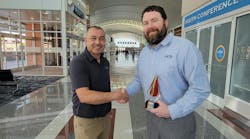FAA and industry groups have spent many hours over the years discussing future requirements for aircraft maintenance professionals. Discussions involved everything from the quantity of mechanics needed, to the quality of mechanics needed. A key point of discussion has been a “shortage of technicians.” The data used to determine this was based on an early ’90s government Blue Ribbon study on the needs of the industry into the future. Many continue to argue that the shortage is still pending and that we need to act now to accommodate the shortage.
It’s difficult right now to justify gearing up for this “impending shortage” when there are thousands of mechanics that are currently either on strike or unemployed. It’s also difficult to argue for gearing up when recent maintenance practices such as outsourcing and large production facilities which require only a few certificated mechanics, then employ general labor to accomplish tasks, are quickly becoming the norm. The aircraft maintenance industry, as well as the need for technicians, and what we need from technicians are unquestionably in a state of flux.
And yet, as I have traveled around the United States attending maintenance training seminars in several states, I find myself often peering across the room viewing the unmistakable glimmer of gray hair. And the thought enters my head, “When these guys, and all their years of experience are gone, who’s going to replace them?”
With AMT Day (May 24, in celebration of the birth of Charles Taylor, the first mechanic) just around the corner — perhaps now is a good time to take a serious look at this and other issues affecting the aircraft mechanic.
And so it is — on May 25 to 26, Embry-Riddle Aeronautical University will host a meeting of key industry personnel at its Daytona Beach, FL, campus to discuss the future of aircraft maintenance. Fred Mirgle, Chairman of Embry-Riddle’s Charles Taylor Department of Aviation Maintenance Science, says that the intent is to come out of this with a better understanding of what the 21st century technician will look like so the schools can better prepare the technician of the future. “The approach is to listen to the industry and provide what’s needed,” he says.
Hopefully the industry will be astute enough to recognize that there are different needs for different areas of the industry. General aviation maintenance technician needs just don’t match the needs for airline and/or corporate mechanics. Unfortunately, this has seldom been addressed at the A&P training level.
Indeed, it seems futile to keep pumping mechanics into the industry who are not adequately prepared. Perhaps it’s time that we accept the changes and advancements in aircraft maintenance, and move forward! In any case, this effort is long overdue! AMT magazine will be attending and let you know what happens. Happy AMT Day!




